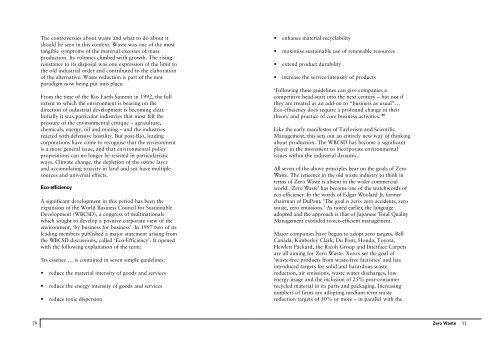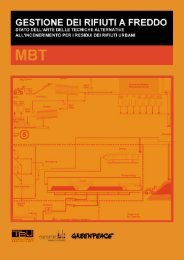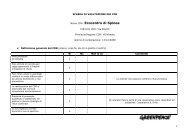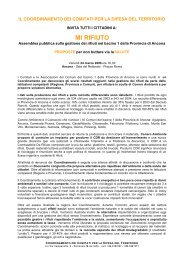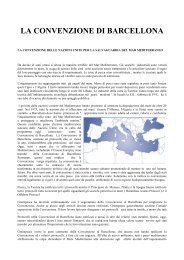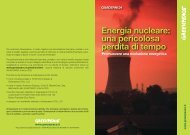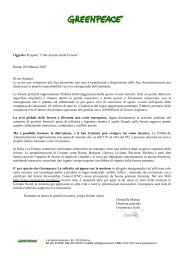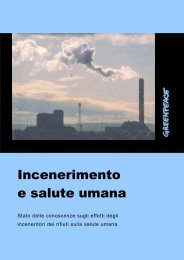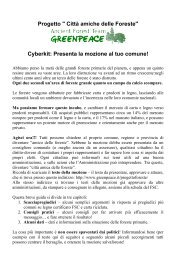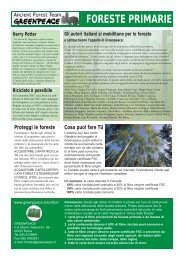Zero Waste by Robin Murray, Greenpeace Environmental Trust 2002
Zero Waste by Robin Murray, Greenpeace Environmental Trust 2002
Zero Waste by Robin Murray, Greenpeace Environmental Trust 2002
You also want an ePaper? Increase the reach of your titles
YUMPU automatically turns print PDFs into web optimized ePapers that Google loves.
The controversies about waste and what to do about it<br />
should be seen in this context. <strong>Waste</strong> was one of the most<br />
tangible symptoms of the material excesses of mass<br />
production. Its volumes climbed with growth. The rising<br />
resistance to its disposal was one expression of the limit to<br />
the old industrial order and contributed to the elaboration<br />
of the alternative. <strong>Waste</strong> reduction is part of the new<br />
paradigm now being put into place.<br />
From the time of the Rio Earth Summit in 1992, the full<br />
extent to which the environment is bearing on the<br />
direction of industrial development is becoming clear.<br />
Initially it was particular industries that most felt the<br />
pressure of the environmental critique – agriculture,<br />
chemicals, energy, oil and mining – and the industries<br />
reacted with defensive hostility. But post-Rio, leading<br />
corporations have come to recognise that the environment<br />
is a more general issue, and that environmental policy<br />
propositions can no longer be resisted in particularistic<br />
ways. Climate change, the depletion of the ozone layer<br />
and accumulating toxicity in land and sea have multiple<br />
sources and universal effects.<br />
E c o - e f f i c i e n c y<br />
A significant development in this period has been the<br />
expansion of the World Business Council for Sustainable<br />
Development (WBCSD), a congress of multinationals<br />
which sought to develop a positive corporate view of the<br />
environment, ‘<strong>by</strong> business for business’. In 1997 two of its<br />
leading members published a major statement arising from<br />
the WBCSD discussions, called ‘Eco-Efficiency’. It opened<br />
with the following explanation of the term:<br />
‘Its essence … is contained in seven simple guidelines:<br />
• reduce the material intensity of goods and services<br />
• reduce the energy intensity of goods and services<br />
• reduce toxic dispersion<br />
• enhance material recyclability<br />
• maximise sustainable use of renewable resources<br />
• extend product durability<br />
• increase the service intensity of products<br />
‘Following these guidelines can give companies a<br />
competitive head-start into the next century – but not if<br />
they are treated as an add-on to “business as usual”…<br />
Eco-efficiency does require a profound change in their<br />
theory and practice of core business activities.’ 46<br />
Like the early manifestos of Taylorism and Scientific<br />
Management, this sets out an entirely new way of thinking<br />
about production. The WBCSD has become a significant<br />
player in the movement to incorporate environmental<br />
issues within the industrial dynamic.<br />
All seven of the above principles bear on the goals of <strong>Zero</strong><br />
<strong>Waste</strong>. The reticence in the old waste industry to think in<br />
t e rms of <strong>Zero</strong> <strong>Waste</strong> is absent in the wider commerc i a l<br />
world. ‘<strong>Zero</strong> <strong>Waste</strong>’ has become one of the watchwords of<br />
e c o - e ff i c i e n c y. In the words of Edgar Wo o l a rd Jr, form e r<br />
c h a i rman of DuPont, ‘The goal is zero: zero accidents, zero<br />
waste, zero emissions.’ As noted earlier, the language<br />
adopted and the approach is that of Japanese Total Quality<br />
Management extended to eco-efficient management.<br />
Major companies have begun to adopt zero targets. Bell<br />
Canada, Kimberley Clark, Du Pont, Honda, Toyota,<br />
Hewlett Packard, the Ricoh Group and Interface Carpets<br />
are all aiming for <strong>Zero</strong> <strong>Waste</strong>. Xerox set the goal of<br />
‘waste-free products from waste-free factories’ and has<br />
introduced targets for solid and hazardous waste<br />
reduction, air emissions, waste water discharges, low<br />
energy usage and the inclusion of 25% post-consumer<br />
recycled material in its parts and packaging. Increasing<br />
numbers of firms are adopting medium-term waste<br />
reduction targets of 50% or more – in parallel with the<br />
70<br />
<strong>Zero</strong> <strong>Waste</strong><br />
71


